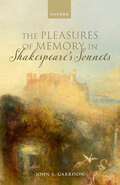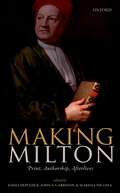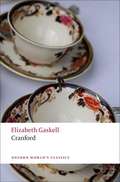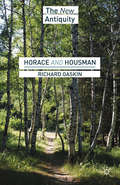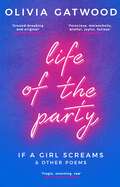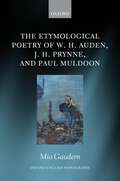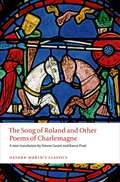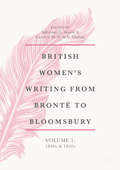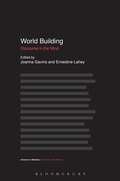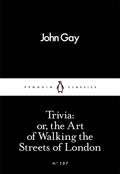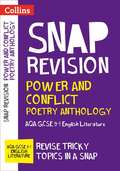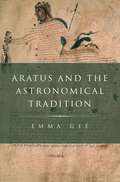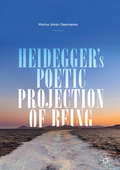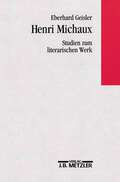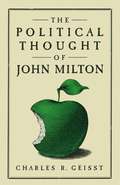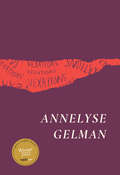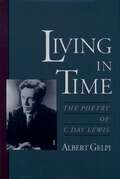- Table View
- List View
The Pleasures of Memory in Shakespeare's Sonnets
by John S. GarrisonThe Pleasures of Memory in Shakespeare's Sonnets uses Shakespeare's poetry as a case study for the mutually formative relationship between desire and recollection. Through a series of close readings that are both historically situated and informed by recent theory, it traces how the speaker of the poems strives for a more agential relationship to his own memory by treating recollection as a form of narrative. Drawing together insights from cognitive science, the early modern memory arts, and psychoanalysis, John S. Garrison connects the Sonnets to the larger Renaissance project of conceiving memory as a faculty to be developed and managed through self-discipline and rhetoric. In doing so, he reveals how early modern thought presaged many theories that have emerged in contemporary neuroscientific and psychoanalytic understandings of the self and its longing for pleasure. The Sonnets emerge as a collection that contemplates the affective dimensions and conceptual overlaps that bind anticipation to retrospection in the fraught pursuit of erotic pleasure. Indispensable for students and scholars working on Shakespeare's poetry, this study appeals also to a broader audience of readers interested in affect, memory, and sexuality studies. Shakespeare's most beloved sonnets are discussed, as well as less familiar ones, alongside contemporary adaptations of the poems. Garrison brings the Sonnets further into the present by comparing them with treatments of pleasure and memory by modern authors such as C.P. Cavafy, Toni Morrison, William Faulkner, and Michael Ondaatje.
The Pleasures of Memory in Shakespeare's Sonnets
by John S. GarrisonThe Pleasures of Memory in Shakespeare's Sonnets uses Shakespeare's poetry as a case study for the mutually formative relationship between desire and recollection. Through a series of close readings that are both historically situated and informed by recent theory, it traces how the speaker of the poems strives for a more agential relationship to his own memory by treating recollection as a form of narrative. Drawing together insights from cognitive science, the early modern memory arts, and psychoanalysis, John S. Garrison connects the Sonnets to the larger Renaissance project of conceiving memory as a faculty to be developed and managed through self-discipline and rhetoric. In doing so, he reveals how early modern thought presaged many theories that have emerged in contemporary neuroscientific and psychoanalytic understandings of the self and its longing for pleasure. The Sonnets emerge as a collection that contemplates the affective dimensions and conceptual overlaps that bind anticipation to retrospection in the fraught pursuit of erotic pleasure. Indispensable for students and scholars working on Shakespeare's poetry, this study appeals also to a broader audience of readers interested in affect, memory, and sexuality studies. Shakespeare's most beloved sonnets are discussed, as well as less familiar ones, alongside contemporary adaptations of the poems. Garrison brings the Sonnets further into the present by comparing them with treatments of pleasure and memory by modern authors such as C.P. Cavafy, Toni Morrison, William Faulkner, and Michael Ondaatje.
Making Milton: Print, Authorship, Afterlives
by John S. Garrison Emma Depledge Marissa NicosiaThis volume consists of fourteen original essays that showcase the latest thinking about John Milton's emergence as a popular and canonical author. Contributors consider how Milton positioned himself in relation to the book trade, contemporaneous thinkers, and intellectual movements, as well as how his works have been positioned since their first publication. The individual chapters assess Milton's reception by exploring how his authorial persona was shaped by the modes of writing in which he chose to express himself, the material forms in which his works circulated, and the ways in which his texts were re-appropriated by later writers. The Milton that emerges is one who actively fashioned his reputation by carefully selecting his modes of writing, his language of composition, and the stationers with whom he collaborated. Throughout the volume, contributors also demonstrate the profound impact Milton and his works have had on the careers of a variety of agents, from publishers, booksellers, and fellow writers to colonizers in Mexico and South America.
Cranford
by Elizabeth Cleghorn GaskellA portrait of the residents of an English country town in the mid nineteenth century, Cranford relates the adventures of Miss Matty and Miss Deborah, two middle-aged spinster sisters striving to live with dignity in reduced circumstances. Through a series of vignettes, Elizabeth Gaskell portrays a community governed by old-fashioned habits and dominated by friendships between women. Her wry account of rural life is undercut, however, by tragedy in its depiction of such troubling events as Matty's bankruptcy, the violent death of Captain Brown or the unwitting cruelty of Peter Jenkyns. Written with acute observation, Cranford is by turns affectionate, moving and darkly satirical.
Horace and Housman (The New Antiquity)
by R. GaskinThe lyric poems of Horace and Housman are two enigmatic bodies of work that have much in common, and a close reading of each poet's writings can illuminate the other's. This is the first book to provide a detailed, critical comparison between these two poets, and also the first to make use of Housman's unpublished lectures on Horace.
Life of the Party: If A Girl Screams, and Other Poems
by Olivia Gatwood____________"I am stirred by the poems in this book - it is a sharp, unflinching collection of poems about girlhood, wonder, casual everyday violence."Yrsa Daley-Ward, author of 'bone' and 'The Terrible'In this multi-faceted collection of odes, anecdotes, sonnets and prose, Olivia Gatwood weaves together the trials and triumphs of growing up and explores the many ways that fear and violence can be internalized in a woman's psyche. At times blistering and riotous, at times soulful and exuberant, Life of the Party is about what it means to be a girl and a woman in today’s world and the challenge of briefly being both. In powerful, piercingly candid language, Gatwood asks: How does one grow from a girl to a woman in a world wracked by violence? What happens to our bodies that make us who we are? Is this fear really irrational?A dazzling collection of raw and explosive poems from a thrilling new feminist voice.
Our Europe: Banquet of Nations
by Laurent GaudéA history of Europe like you’ve never read before. “For some time now, Europe seems to have forgotten it is the daughter of epics and utopia. It has been drained by its inability to remind its citizens of this. Too distant, disembodied, the concept often arouses nothing more than disillusioned boredom. And yet, the history of Europe is one of constant upheaval. So much fire and death; inventions and art, too. Literature, perhaps, can remind us of this: that the European history is one of muscle, vigour, passion, anger and joy. Words of literature, perhaps, can restore conviction and momentum, which make everything possible, to the heart of the story.” From the industrial revolution through two world wars and to the birth of the European Union, Our Europe sets in free verse the story of 150 years of growth, confrontation, hope, defeat and passion. Our Europe is a heartfelt appeal to bring into being a Europe that celebrates difference, solidarity, and freedom.
The Etymological Poetry of W. H. Auden, J. H. Prynne, and Paul Muldoon (Oxford English Monographs)
by Mia GaudernThis book defines, analyses, and theorises a late modern 'etymological poetry' that is alive to the past lives of its words, and probes the possible significance of them both explicitly and implicitly. Close readings of poetry and criticism by Auden, Prynne, and Muldoon investigate the implications of their etymological perspectives for the way their language establishes relationships between people, and between people and the world. These twin functions of communication and representation are shown to be central to the critical reception of etymological poetry, which is a category of 'difficult' poetry. However resonant poetic etymologising may be, critics warn that it shows the poet's natural interest in language degenerating into an unhealthy obsession with the dictionary. It is unavoidably pedantic, in the post-Saussurean era, to entertain the idea that a word's history might have any relevance to its current use. As such, etymological poetry elicits the closest of close readings, thus encouraging readers to reflect not only on its own pedantry, obscurity, and virtuosity, but also on how these qualities function in criticism. As well as presenting a new way of reading three very different late modern poet-critics, this book addresses an understudied aspect of the relationship between poetry and criticism. Its findings are situated in the context of literary debates about difficulty and diction, and in larger cultural conversations about the workings of language as a historical event.
The Etymological Poetry of W. H. Auden, J. H. Prynne, and Paul Muldoon (Oxford English Monographs)
by Mia GaudernThis book defines, analyses, and theorises a late modern 'etymological poetry' that is alive to the past lives of its words, and probes the possible significance of them both explicitly and implicitly. Close readings of poetry and criticism by Auden, Prynne, and Muldoon investigate the implications of their etymological perspectives for the way their language establishes relationships between people, and between people and the world. These twin functions of communication and representation are shown to be central to the critical reception of etymological poetry, which is a category of 'difficult' poetry. However resonant poetic etymologising may be, critics warn that it shows the poet's natural interest in language degenerating into an unhealthy obsession with the dictionary. It is unavoidably pedantic, in the post-Saussurean era, to entertain the idea that a word's history might have any relevance to its current use. As such, etymological poetry elicits the closest of close readings, thus encouraging readers to reflect not only on its own pedantry, obscurity, and virtuosity, but also on how these qualities function in criticism. As well as presenting a new way of reading three very different late modern poet-critics, this book addresses an understudied aspect of the relationship between poetry and criticism. Its findings are situated in the context of literary debates about difficulty and diction, and in larger cultural conversations about the workings of language as a historical event.
The Song of Roland and Other Poems of Charlemagne (Oxford World's Classics)
by Simon Gaunt Karen PrattCharles the king, our emperor great, Has been a full seven years in Spain. As far as the sea he conquered this haughty land. Not a single castle remains standing in his path Charlemagne (768-814) was crowned Holy Roman Emperor in 800 and presided over a huge empire. He frequently appears in literature as a great warlord and pious crusading figure. In 778, the rearguard of Charlemagne's retreating army was ambushed and defeated at the battle of Roncevaux. This became the inspiration for songs and poems celebrating deeds of valour in the face of overwhelming odds, through the character of Charlemagne's nephew (the imaginary) Roland. The Song of Roland is the most stirring and moving epic poem of the European Middle Ages, offering a particularly heady mixture of history, legend, and poetry. Presented here in a lively and idiomatic new translation, the Song of Roland offers fascinating insights into medieval ideas about heroism, manhood, religion, race, and nationhood which were foundational for modern European culture. The Song of Roland is accompanied here by two other medieval French epics about Charlemagne, both of which show him to be a far more equivocal figure than that portrayed by the Roland: the Occitan Daurel and Beton, in which he is a corrupt and avaricious monarch; and the Journey of Charlemagne to Jerusalem and Constantinople, which gives the heroes of the Roland a comic makeover.
British Women's Writing from Brontë to Bloomsbury, Volume 1: 1840s and 1850s (British Women’s Writing from Brontë to Bloomsbury, 1840-1940 #1)
by Adrienne E. Gavin Carolyn W. de la L. OultonThis five-volume series, British Women’s Writing From Brontë to Bloomsbury, 1840-1940, historically contextualizes and traces developments in women’s fiction from 1840 to 1940. Critically assessing both canonical and lesser-known British women’s writing decade by decade, it redefines the landscape of women’s authorship across a century of dynamic social and cultural change. With each of its volumes devoted to two decades, the series is wide in scope but historically sharply defined. Volume 1: 1840s and 1850s inaugurates the series by historically and culturally contextualizing Victorian women’s writing distinctly within the 1840s and 1850s. Using a range of critical perspectives including political and literary history, feminist approaches, disability studies, and the history of reading, the volume’s 16 original essays consider such developments as the construction of a post-Romantic tradition, the politicization of the domestic sphere, and the development of crime and sensation writing. Centrally, it reassesses key mid-nineteenth-century female authors in the context in which they first published while also recovering neglected women writers who helped to shape the literary landscape of the 1840s and 1850s.
World Building: Discourse in the Mind (Advances in Stylistics)
by Joanna Gavins Ernestine LaheyWorld Building represents the state-of-the-discipline in worlds-based approaches to discourse, collected together for the first time. Over the last 40 years the 'text-as-world' metaphor has become one of the most prevalent and productive means of describing the experiencing of producing and receiving discourse. This has been the case in a range of disciplines, including stylistics, cognitive poetics, narratology, discourse analysis and literary theory.The metaphor has enabled analysts to formulate a variety of frameworks for describing and examining the textual and conceptual mechanics involved in human communication, articulating these variously through such concepts as 'possible worlds', 'text-worlds' and 'storyworlds'. Each of these key approaches shares an understanding of discourse as a logically grounded, cognitively and pragmatically complex phenomenon. Discourse in this sense is capable of producing highly immersive and emotionally affecting conceptual spaces in the minds of discourse participants.The chapters examine how best to document and analyze this and this is an essential collection for stylisticians, linguists and narrative theorists.
World Building: Discourse in the Mind (Advances in Stylistics)
by Joanna Gavins Ernestine LaheyWorld Building represents the state-of-the-discipline in worlds-based approaches to discourse, collected together for the first time. Over the last 40 years the 'text-as-world' metaphor has become one of the most prevalent and productive means of describing the experiencing of producing and receiving discourse. This has been the case in a range of disciplines, including stylistics, cognitive poetics, narratology, discourse analysis and literary theory.The metaphor has enabled analysts to formulate a variety of frameworks for describing and examining the textual and conceptual mechanics involved in human communication, articulating these variously through such concepts as 'possible worlds', 'text-worlds' and 'storyworlds'. Each of these key approaches shares an understanding of discourse as a logically grounded, cognitively and pragmatically complex phenomenon. Discourse in this sense is capable of producing highly immersive and emotionally affecting conceptual spaces in the minds of discourse participants.The chapters examine how best to document and analyze this and this is an essential collection for stylisticians, linguists and narrative theorists.
Trivia: By Mr. J. Gay, ... (Penguin Little Black Classics)
by John GayO! may thy Virtue guard thee through the RoadsOf Drury's mazy Courts, and dark Abodes,The Harlots guileful Paths, who nightly stand,Where Katherine-street descends into the Strand.
Collins GCSE Grade 9-1 SNAP Revision — AQA POETRY ANTHOLOGY POWER AND CONFLICT REVISION GUIDE: Ideal For Home Learning, 2022 And 2023 Exams (Collins Gcse Grade 9-1 Snap Revision Ser.)
by Collins GcsePower and Conflict Poetry Anthology: AQA GCSE 9-1 English Literature (PDF) (Collins Snap Revision)
by Collins GcseExam Board: AQA Level: GCSE Subject: English Language First Teaching: September 2015; First Exams: June 2017 Revise tricky topics in a snap Need extra help with the Power & Conflict Poetry Anthology ahead of the exam? Revise and review your understanding of the poems, themes, context, poetic voice and structure with this handy A5, exam-focused guide. - The poems: a detailed analysis of all fifteen 'Power and Conflict' poems, with ‘Key quotations’, ‘Additional context’, ‘Sample analysis’ and ‘Quick tests’. - Comparison: how to come up with ideas and structure a comparison of two poems - Exam preparation section: includes 'tips and assessment objectives', Grade 5 and Grade 7 annotated answers and exam-style practice questions.
Unseen Poetry: AQA GCSE 9-1 English Literature (PDF) (Collins Snap Revision)
by Collins GcseExam Board: AQA Level: GCSE Subject: English Language First Teaching: September 2015; First Exams: June 2017 Revise tricky topics in a snap Need extra help with Unseen Poetry ahead of the exam? Revise and review your understanding of how to analyse the subject, voice, form and language of poetry with this handy A5, exam-focused guide. - Approach to poetry: how to analyse 15 unseen poems with annotations, sample analysis, quick questions and exam practice in each topic. - Comparison: how to come up with ideas and structure a comparison of two poems - Exam preparation section: includes 'tips and assessment objectives', Grade 5 and Grade 7 annotated answers and exam-style practice questions.
Heidegger's Poetic Projection of Being
by Marius Johan GeertsemaThis book investigates the relationship between poetry and ontology in the works of Martin Heidegger. It explains the way in which Heidegger’s dialogue with poetry forms an essential step on the path of overcoming metaphysics and thinking the openness of presence. Heidegger’s engagement with poetry is an important moment in the development of his philosophy—or rather thinking of Being. Being speaks itself poetically in his view. Rather than a logician or a thinker, Being is the first poet.
Heidegger's Poetic Projection of Being
by Marius Johan GeertsemaThis book investigates the relationship between poetry and ontology in the works of Martin Heidegger. It explains the way in which Heidegger’s dialogue with poetry forms an essential step on the path of overcoming metaphysics and thinking the openness of presence. Heidegger’s engagement with poetry is an important moment in the development of his philosophy—or rather thinking of Being. Being speaks itself poetically in his view. Rather than a logician or a thinker, Being is the first poet.
Vexations (Phoenix Poets)
by Annelyse GelmanA mother and daughter journey together through a strange speculative world in this experimental book-length poem. Annelyse Gelman’s book-length poem Vexations is a surreal, glitchy meditation on empathy, ecology, and precarity. Throughout the book winds a narrative about a mother and daughter as they move through a world of social and economic collapse in search of a post-capitalist safe haven. All the while, they also navigate a condition that affects the daughter’s empathic abilities, making her vulnerable to emotional contagion. Vexations is titled and structured after Erik Satie’s composition of the same name, a piece that requires patience, endurance, and concentration from both its audience and its players. Similarly, Gelman’s Vexations employs repetition and variation to engage the reader’s attention. Hers is an ambient poetry, drawing on the aesthetic qualities of drone music and sampling voices and sounds to create a lush literary backdrop filled with pulsing psychedelic detail.
Vexations (Phoenix Poets)
by Annelyse GelmanA mother and daughter journey together through a strange speculative world in this experimental book-length poem. Annelyse Gelman’s book-length poem Vexations is a surreal, glitchy meditation on empathy, ecology, and precarity. Throughout the book winds a narrative about a mother and daughter as they move through a world of social and economic collapse in search of a post-capitalist safe haven. All the while, they also navigate a condition that affects the daughter’s empathic abilities, making her vulnerable to emotional contagion. Vexations is titled and structured after Erik Satie’s composition of the same name, a piece that requires patience, endurance, and concentration from both its audience and its players. Similarly, Gelman’s Vexations employs repetition and variation to engage the reader’s attention. Hers is an ambient poetry, drawing on the aesthetic qualities of drone music and sampling voices and sounds to create a lush literary backdrop filled with pulsing psychedelic detail.
Living in Time: The Poetry of C. Day Lewis
by Albert GelpiThe Oxford poets of the 1930s--W. H. Auden, C. Day Lewis, Stephen Spender, and Louis MacNeice--represented the first concerted British challenge to the domination of twentieth-century poetry by the innovations of American modernists such as Ezra Pound and William Carlos Williams. Known for their radical politics and aesthetic conservatism, the "Auden Generation" has come to loom large in our map of twentieth century literary history. Yet Auden's voluble domination of the group in its brief period of association, and Auden's sway with critics ever since, has made it difficult to hear the others on their own terms and in their own distinct voices. Here, rendered in eloquent prose by one of our most distinguished critics of modern poetry, is the first full-length study of the poetry of C. Day Lewis, a book that introduces the reader to a profoundly revealing and beautifully wrought record of his poetry against the cultural and literary ferment of this century. Albert Gelpi explores in three expansive sections the major periods of the poet's development, beginning with the emergence of Day Lewis in the thirties as the most radical of the Oxford poets. An artist who sought through poetry a way of "living in time" without traditional religious assurances, Day Lewis went further than his friends in seeking to forge a revolutionary poetry out of his commitment to Marxism. When Stalinism led to his resignation from the Communist Party, Day Lewis in the forties went on to shape a rich, fiercely perceptive poetry out of the convergence of the wartime crisis with the explosive events of his own inner life, intensified by the erotics of a decade-long affair. Returning to his Irish roots and meditating on the persistent tension between agnosticism and faith in the work of his third and final period, Day Lewis wrote some of the most moving poems in the language about mortality and dying, the limits and possibilities of human striving. Through the traumatic changes of his life C. Day Lewis came increasingly to depend on the intricacies of poetry itself as a way of living in time. His abiding belief in the psychological and moral functions of poetry impelled him in his critical writings and in his own poetic practice to delineate a modern poetics that presents an effective alternative to the elitist experimentation associated with Modernism. This vital revisionist reading of Day Lewis demonstrates that much of his best work was written after the thirties and establishes him as one of the most significant and accomplished British poets of the modern period.
